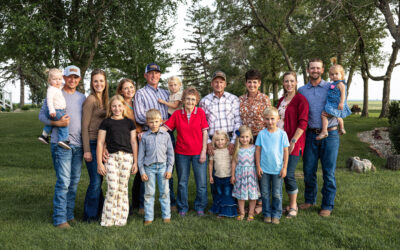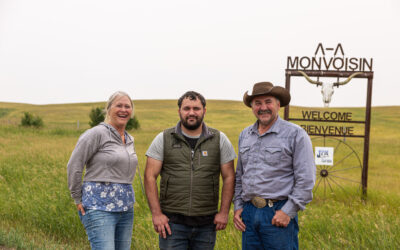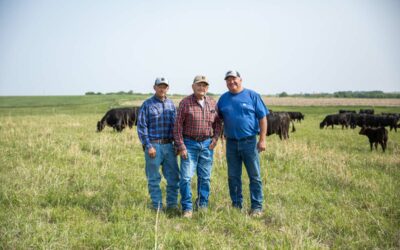
Good things can happen when marbling leads selection criteria
by Steve Suther
December 16, 2019
What happens to a commercial Angus herd after 23 years of selection led by marbling? No worries, really, just premium opportunities.
That’s the nutshell from veteran Iowa State University animal scientist Dan Loy, whose team recently authored a white paper based on data from their quality-selected Angus herd.
In November, Loy reminded producers at the Angus Convention in Reno, “Reproduction in the cow herd is very complex. There’s a genetic component—that’s the big box across the top—but it’s impacted by the environment and nutrition at different stages—there are a lot of moving parts.”
Noting past studies and literature reviews, he then focused on ISU’s Angus cow herds, first set up in 1996 as a means to use ultrasound-based selection for either high marbling or high yield. In 2002, the latter herd was dispersed when American Angus Association’s statistical tools had improved. The breed’s expected progeny difference (EPD) for marbling (MARB) has guided the 400-cow herd at the fescue-based McNay Farms in southcentral Iowa since then (see sidebar).
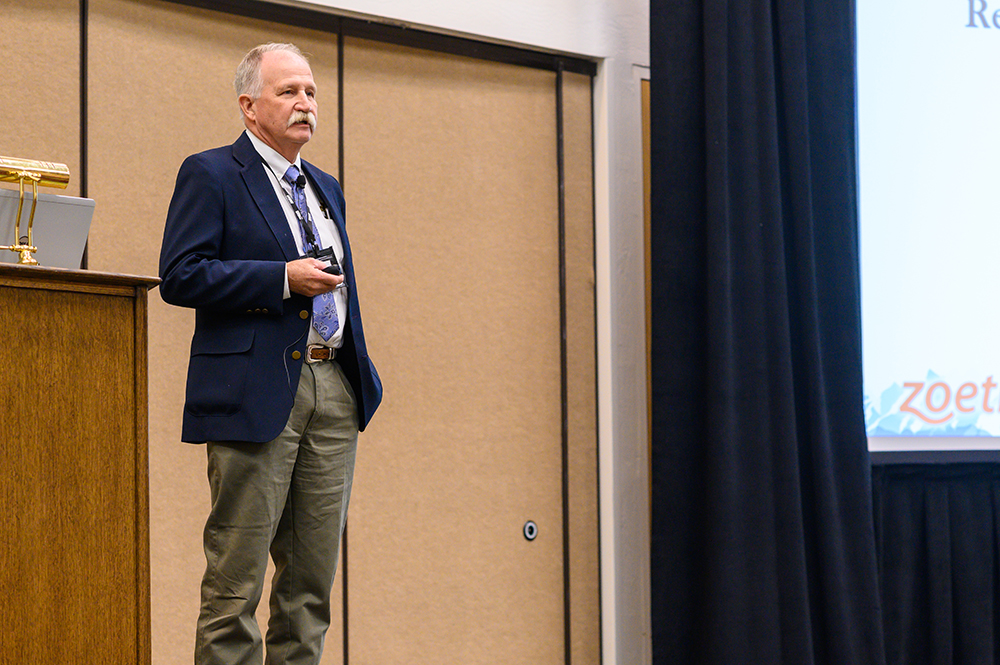
Loy compared the Angus MARB versus the ISU herd’s EPD over time, simplified with trend lines that currently show the average ISU cows now higher than 1 while the Angus average nears 0.6.
Looking at interactions with other EPDs, he pointed out the Iowa cows lagged behind on heifer pregnancy early on.
“We’ve been improving that through the years so that, currently, we’re about breed average,” he said, adding the same can be said for the milk and weaning weight EPDs.
An unusual feature of the Iowa herd is the internally raised crop of breeding bulls. They allow for “a unique dataset,” Loy said, that includes the ability to track the scrotal circumference EPD, slightly above breed average, and within the Angus breed, slightly positive in its correlation to marbling.
The ISU herd phenotype in terms of carcass performance can be seen in the finished steers and heifers marketed in the last five years, currently at 93% or more qualified for the Certified Angus Beef ® (CAB®) brand, including 57% Prime.
“I like to say Prime is the new Choice,” Loy remarked, “because working with feedlot nutritionists, and in the research, you always see quality expressed in terms of percent Choice.
“With these cattle, that’s a meaningless number, because they’re all Choice,” he said. A guiding principle now is, “We just need to figure out how not to screw that up.”
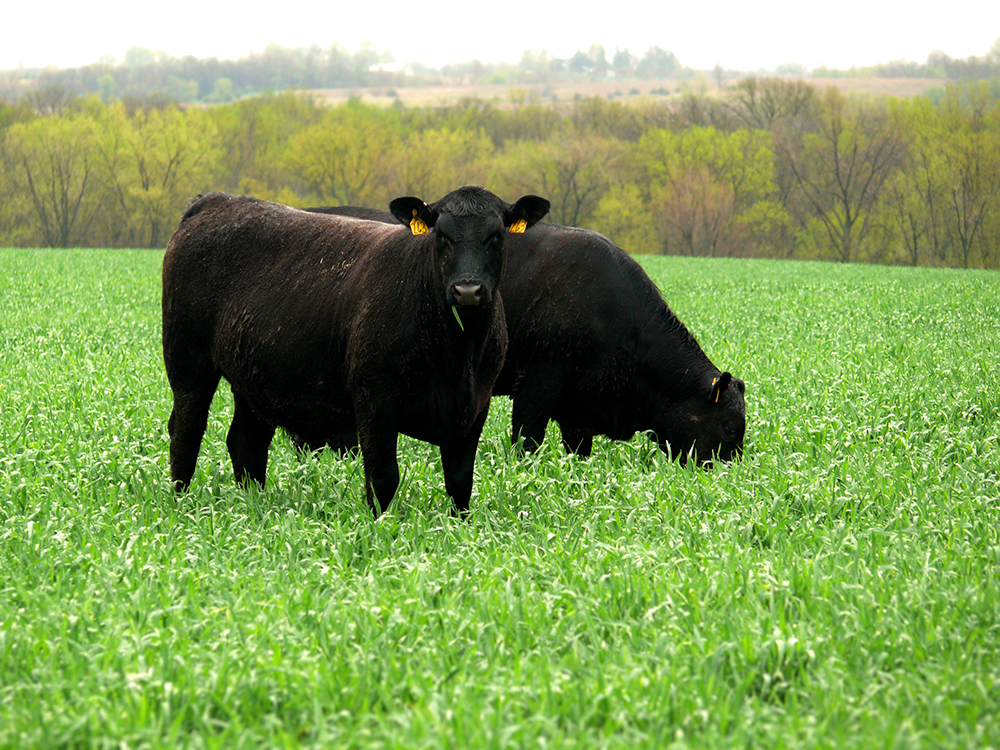
Average ribeye area, fat thickness and yield grade within the ISU herd “very typical of the industry,” Loy said, although the carcass weights are a little lighter.
The research setting and quality goals open research doors into the timing of marbling deposition as well as how brood cows deplete and build up intramuscular fat during a production year.
Serial harvest of steers has found weanling steers that could already grade Choice.
“We know marbling starts much earlier in life that was thought, and it’s a slower process,” Loy said. The ISU team has just started monitoring marbling levels in cows during gestation to see how much it may draw down or increase with body condition scores.
Other datasets include calving intervals and reproductive success over time, compared to marbling. Simple correlations found significant, slightly positive relationships with heifer pregnancy, number of calves produced and even numerically favorable in terms of calving interval.
“So that’s in the right direction,” Loy noted.
“Overall, it’s kind of like a broken record and a little bit boring, but we found very little relationship between marbling and reproduction,” he concluded.
Leading up to ISU herd data analysis
Genetic improvement in beef cattle means jumping hurdles or “antagonisms” among the traits.
When animal scientist Dan Loy signed on with Iowa State University (ISU) as a feedlot specialist 40 years ago, he brought along a commercial Angus background. Best practices for the herds supplying feedlots then were crossbreeding and balanced selection for maternal and growth traits.
Stockmen had to use single-trait “heifer bulls,” because there weren’t many bulls with calving ease along with growth. If anybody paid attention to marbling, they probably noticed some bulls above average there had little else to recommend them.
Science charted and measured the antagonisms for decades, and the Certified Angus Beef ® (CAB®) brand sponsored a literature review at Kansas State University in 1999, updated in 2007. That was revisited by researchers at Virginia Tech in 2013. The consensus has always found little or no correlation between marbling and other traits.
That lack of correlation says marbling, maternal function and growth should all fit together in the same cow.
Before those studies, in 1996, Loy and ISU began gathering data on calves from the University’s two Angus herds, built on either marbling or ribeye emphasis. Early on, results were not much publicized and after six years, the ribeye herd was discontinued when an ultrasound technician moved on.
It took many years to build up enough volume to achieve significance in data from the McNay Farms herd near Chariton, Iowa. But that time has come with the white paper’s publication, now available online.
you may also like
North Dakota Partnership Earns CAB Progressive Partner Award
The Bruner and Wendel families earned the 2023 CAB Progressive Partner award by selling high-quality beef through Dakota Angus, LLC, as part of the CAB Ranch To Table program. They focus on their commitment to quality, data-driven decisions, achieve impressive CAB and Prime percentages and offer high-quality beef directly to consumers in their communities.
Saskatchewan Angus Ranch Earns Certified Angus Beef Award
JPM Farms in Canada quietly gained recognition for its dedication to environmental sustainability and quality cattle. The Monvoisin family earned the 2023 CAB Canadian Commitment to Excellence award for their outstanding results and partnership with Duck Unlimited, showcasing their commitment to improving the land, cattle and family daily.
Benoit Angus Ranch honored with CAB Seedstock Commitment to Excellence Award
What started with six Angus heifers, has now grown into 400 Angus females, along with a 2,500 acre farming division. The multi-generation family business focus on improving the reputation on the ranch with high-quality cattle. From the ground up, Benoit Angus Ranch has earned the CAB 2023 Seedstock Commitment to Excellence Award.

